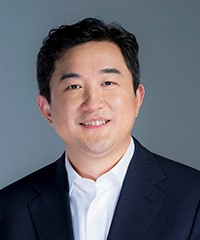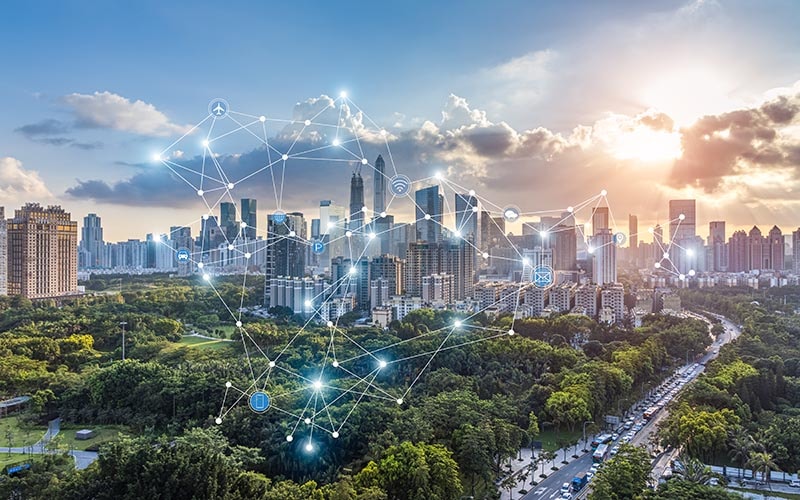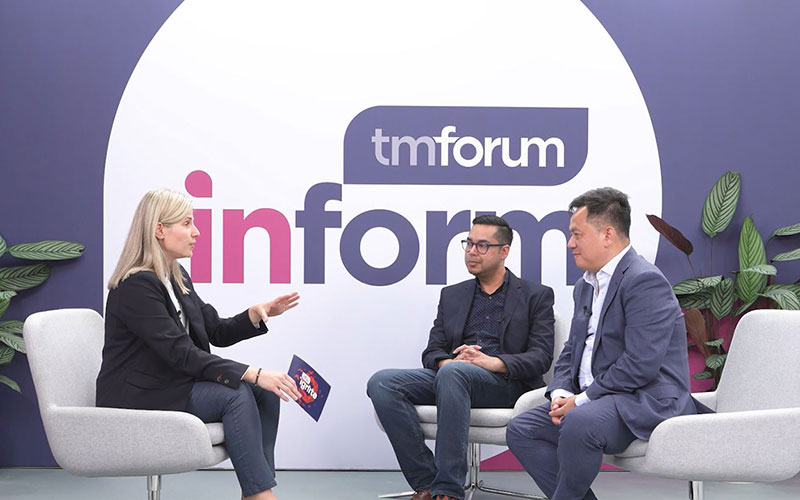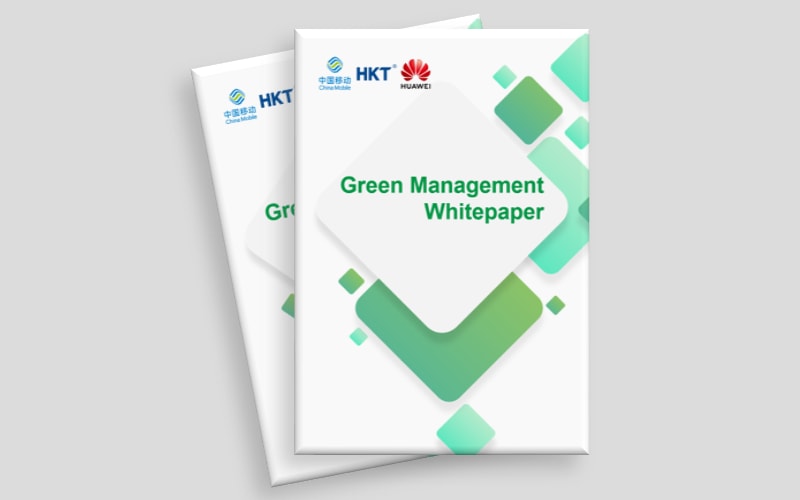New Solutions
Innovation In Digital Technologies to Support Green Development
The ICT industry needs to undertake two major actions to support sustainable development and help combat climate change.


By Kevin Zhang, CMO, ICT Infrastructure, Huawei

Climate change seriously threatens not only global development, but also human survival. Now more than ever, we must strive for green, low-carbon production and lifestyles, and promote sustainable development. We have seen throughout history how new technologies can drive social advancement. Already, key digital technologies, such as 5G, cloud, and AI, are playing an increasingly important role in driving us towards a green world. Many industries are using these technologies to go digital. Doctors are treating more patients remotely. More students are signing into online classes. And remote conferencing and work have become more and more efficient.
Huawei has long embraced green growth. As a leading global provider of ICT infrastructure and smart devices, Huawei's vision and mission is to bring digital to every person, home and organization for a fully connected, intelligent world. Over the past 30-plus years, Huawei has committed itself to innovating digital technologies to fulfill its vision, while staying customer-centric and meeting market demand. Together with our partners, we have strived to help various industries achieve green development.
Specifically, we have three priorities for these continued efforts.
We help build green ICT infrastructure by developing simplified architecture and innovative, energy-efficient products
For telecom carriers, saving energy and cutting emissions at sites, data centers, and network connections are the key to green development. Huawei helps carriers build green ICT infrastructure by designing simplified architecture, applying innovations in multiple aspects, and continuously improving product energy efficiency.
Green sites with simplified architecture
Widely deployed wireless sites are a primary focus in carriers' energy saving and emission reduction efforts. By simplifying the architecture of our site solutions, Huawei has managed to replace equipment rooms with cabinets and poles. This allows carriers to upgrade a site to 5G without increasing its energy-related OPEX.
By using cabinets to replace indoor equipment rooms, our solution increases the energy efficiency of a traditional site, where 40% of all power is used for heat dissipation, from below 60% to 90%. Energy efficiency can even reach 97% by adopting Huawei's outdoor site solution where all equipment is installed on a pole. Solar systems can also be added to these solutions, allowing the sites to generate their own green power.
These green site solutions are the result of innovation in three areas: innovative technology and system design that make AAUs more efficient; evolution to multi-band, multi-mode, and multi-channel RRUs; and continuous improvements in solar cell efficiency.
Green data centers with multiple innovations
Data centers are the heart of a digital economy, but they also consume large amounts of energy. With the rapid growth of data centers both in terms of speed and deployment density in recent years, the shortcomings of traditional air cooling technology have become increasingly apparent.
To address the problem, Huawei has made the cooling systems of data centers significantly more energy-efficient through multiple innovations, including full liquid cooling, AI management, structural design, and cluster computing.
In a closed liquid-cooled cabinet, all heat is dissipated by liquid, reducing the power consumption of cooling systems by 96% and cutting the power usage effectiveness (PUE) from 2.2 to 1.1, compared with a conventional air cooling solution. For a 50-kW cabinet, the annual power saving amounts to about 500,000 kWh.
These reductions in the power consumption of cooling systems are key to making data centers more energy efficient. Traditional cooling systems were mostly manually adjusted. However, as data center loads and their environments constantly change, manual adjustment can no longer keep up with rapidly changing heat loads. To prevent energy from being wasted, cooling systems need smart brains that can intelligently adjust and deliver cooling as necessary. Huawei's iCooling solution, which integrates big data and AI, enables data centers to learn to save power and automatically optimize their power efficiency, making on-demand, intelligent cooling a reality. The solution reduces data centers' PUE by 8%-15%. This solution is deployed at Huawei's cloud data center in Langfang, where it delivers savings of 27.64 million kWh of electricity every year.
While greatly reducing energy consumption, the solution also uses an integrated structure and cluster-based computing architecture to maximize computing efficiency, helping carriers build green data centers.
Energy-efficient, intelligent connectivity
In addition to sites and data centers, all connections that support ICT infrastructure must also meet green and low-carbon requirements. Huawei has integrated these requirements into the entire R&D lifecycle of its products. While improvements in product and solution performance often mean higher energy consumption, we have continued to seek new and innovative ways in multiple dimensions, including raw materials, processes, algorithms, and heat dissipation technologies, to improve the energy efficiency of our products and solutions.
For energy-efficient 5G networks, Huawei has launched the innovative three-level energy saving solution, PowerStar. It uses built-in AI to analyze live network data and build traffic models to identify typical scenarios for energy saving. With these models, the AI can predict upcoming traffic changes, and deliver scenario-specific energy saving plans. This enables a targeted energy saving strategy for each network site to maximize power savings. According to China Mobile Hunan's live network tests, PowerStar lowered total network energy consumption by 10%.
Optical communications technology is widely recognized as an ideal option for providing low-carbon connectivity in the F5G era. For backbone and transmission networks, Huawei is using optical cross-connect (OXC) and passive optical LAN (POL) technologies to build green, low-carbon, and ultra-broadband networks that consume significantly less power.
For home access, Huawei has launched the Huawei OptiXstar smart optical modem series. The Advanced Power Management (APM) mechanism of these products automatically puts the device in different modes (active, dormant, and sleep) at different times of day, depending on usage patterns. This continues to deliver superior experiences to users while also maximizing green and low-carbon operations. Each Huawei OptiXstar uses only about 0.37 kWh per day and saves users 38.5 kWh every year. Broad, global adoption of these products would together bring considerable savings.
We use bits to manage watts to promote clean energy and the digitalization of traditional energy
Transforming energy systems is key to going digital, low-carbon, and green.
Huawei works to converge power electronics and digital technologies to promote clean energy and the digitalization of traditional energy. By using bits to manage watts, we are using digital technologies to control power electronics equipment. Our main focal areas span clean power generation, energy digitalization, transportation electrification, green ICT infrastructure, and integrated smart energy. We provide secure, efficient, green, and intelligent products and solutions for these areas. We also provide the energy industry with enablement platforms for embedded power, intelligent power distribution, and energy storage. Next, we will develop an open Energy Management Cloud Service platform covering various digital power scenarios for all of our customers and partners.
By providing these products and solutions, Huawei aims to support low-carbon development in a range of scenarios including homes, buildings, factories, campuses, villages, and cities. This will help transform the energy mix of enterprises and even countries, ultimately leading to a green world. As of September 30, 2021, Huawei's digital power products and solutions had helped customers generate 443.5 billion kWh of clean energy, while saving 13.6 billion kWh of electricity, equivalent to reducing 210 million tons of carbon emissions.

We bring digital technologies to all industries, enabling their green development
In addition to reducing emissions in the ICT industry, we are also paying close attention to the reductions that ICT indirectly generates by empowering other industries. According to the Global Enabling Sustainability Initiative (GeSI), ICT has the potential to enable a 20% reduction in global CO2 emissions by 2030. The amount of carbon reduced this way far outstrips what the industry uses and emits itself.
At present, how to reduce emissions in traditional industries, especially those with typically heavier emissions, is a key issue for the transition towards a low-carbon world. It is also a key part of our innovation strategy. We remain committed to providing digital technologies to help all industries go digital and low-carbon.
We've made some exciting progress so far. For example, after Shenzhen fully electrified its bus fleet in 2017, it was plagued by short battery ranges, long charging times, and inadequate charging stations. In response, Huawei has created a smart charging solution that uses algorithms to intelligently arrange charging overnight. This peak-cut model greatly improves charging efficiency, and is expected to decrease the power expenses of Shenzhen Bus Group by 5% to 10% every year. In smart transportation, our traffic light management solution can reduce both traffic jams and emissions in cities. Our smart heating solution is already reaping benefits for Harbin, a city in northeastern China, where Harbin Taiping Heating has found that our on-demand heating solution reduces average energy use by over 10%.
Our commitment to green ICT and green development will continue long into the future. These challenges are ones that every enterprise, organization, and individual must face, and the only way to overcome them is continuous collaboration on innovation. Huawei is ready to work with everyone to achieve this goal sooner.
- Tags:
- Environment
- Energy






